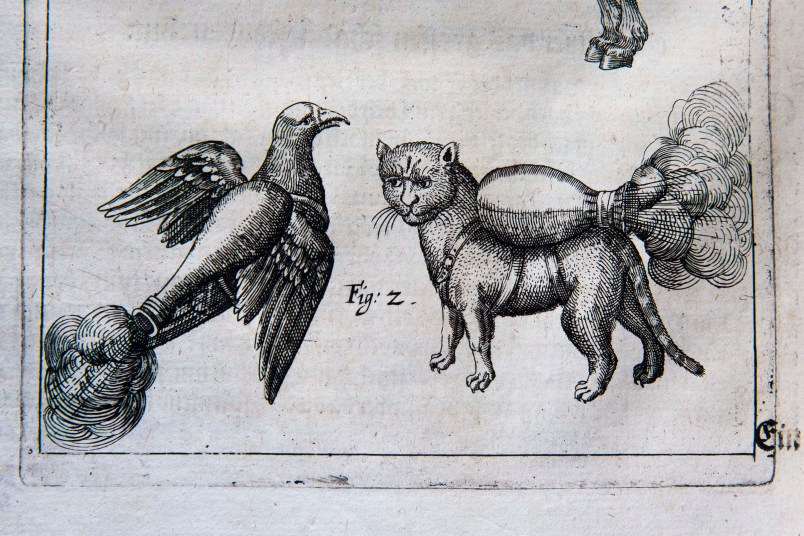PHILADELPHIA (AP) — You’re a 16th century German prince plotting to crush a peasant rebellion, or perhaps you’re leading an army against the Ottoman Empire or looking to settle the score with a rival nobleman. What’s a guy looking for a tactical edge to do?
Bring on the rocket cats!
Fanciful illustrations from a circa-1530 manual on artillery and siege warfare seem to show jet packs strapped to the backs of cats and doves, with the German-language text helpfully advising military commanders to use them to “set fire to a castle or city which you can’t get at otherwise.”

Digitized by the University of Pennsylvania, the unusual, full-color illustrations recently caught the attention of an Australian book blog and then found their way to Penn researcher Mitch Fraas, who set out to unravel the mystery.
“I really didn’t know what to make of it,” said Fraas, a historian and digital humanities expert at the Penn library. “It clearly looks like there’s some sort of jet of fire coming out of a device strapped to these animals.”
So were these unfortunate animals from the 1500s really wearing 20th-century technology?
Fraas’ conclusion: No. Obviously.
The treatise in question was written by artillery master Franz Helm of Cologne, who was believed to have fought in several skirmishes against the Turks in south-central Europe at a time when gunpowder was changing warfare.
Circulated widely and illustrated by multiple artists, Helm’s manual is filled with all sorts of strange and terrible imagery, from bombs packed with shrapnel to missile-like explosive devices studded with spikes — and those weaponized cats and birds.

According to Fraas’ translation, Helm explained how animals could be used to deliver incendiary devices: “Create a small sack like a fire-arrow . if you would like to get at a town or castle, seek to obtain a cat from that place. And bind the sack to the back of the cat, ignite it, let it glow well and thereafter let the cat go, so it runs to the nearest castle or town, and out of fear it thinks to hide itself where it ends up in barn hay or straw it will be ignited.”
In other words, capture a cat from enemy territory, attach a bomb to its back, light the fuse and then hope it runs back home and starts a raging fire.
Fraas said he could find no evidence that cats and birds were used in early modern warfare in the way prescribed by Helm.
A good thing, too.
“Sort of a harebrained scheme,” Fraas said. “It seems like a really terrible idea, and very unlikely the animals would run back to where they came from. More likely they’d set your own camp on fire.”
Copyright 2014 The Associated Press. All rights reserved. This material may not be published, broadcast, rewritten or redistributed.










